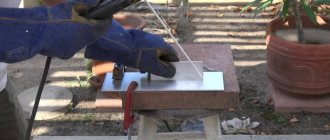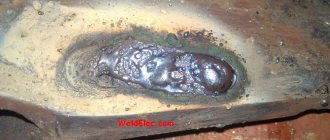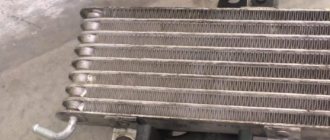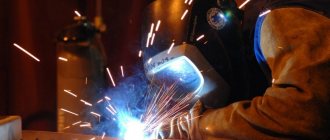The metal got its name from the consonance of the names of the elements that form it. Sil - silicon (silicon in Latin), plus - aluminum (aluminum). The result was silumin, an alloy of aluminum and silicon.
The strength and, accordingly, the cost of the alloy varies significantly. Cheap products (various types of accessories, decorations) are sometimes broken with bare hands. At the same time, alloys of similar composition form engine housings, power elements of machine tools, and technological equipment.
We will look at what silumin is and how this metal can be welded in our article.
Special properties
The amount of silicon in the alloy ranges from 5 to 20%, which leads to a variety of properties . Despite the fact that it is not noticeable from the outside. In addition, additional alloying affects the physical properties. These are manganese, titanium, zinc, some other metals and halogens.
Externally, silumin is a shiny silvery metal.
The color of the fracture is silver-gray with clearly visible grain. Technically, the metal belongs to foundry .
High fluidity allows you to accurately fill the smallest details of the mold. It also interferes with welding the joint - the liquid melt easily flows out of the seam. In addition to fluidity, silumin welding is hampered by:
- tendency to form pores;
- cracking of the deposited metal, caused by both high residual stresses and uneven crystallization;
- high thermal conductivity;
- low melting point.
All of the above leads to the fact that the problem of how to weld silumin has to be solved individually, for each specific case.
Most alloying additives have a negative effect on the welding process. Zinc is especially characteristic in this regard. The higher its content, the more difficult welding is; at 5% and higher, welding is associated with such difficulties that it becomes pointless.
Silumins are less durable than duralumin alloys. At the same time, they are practically resistant to corrosion. The disadvantage of the alloy is fragility . It is so high that when processed by metal-cutting machines it simply crumbles without forming chips.
Modification with sodium or lithium allows you to increase the percentage of silicon to 22%.
How does the process work?
Silumin’s corrosion protection is provided by a durable oxide film. It also complicates the welding process, preventing the direct connection of atoms .
Welding of non-critical (lightly loaded) parts is carried out at direct current of reverse polarity, using coated electrodes, or at direct current using an infusible electrode, carbon or tungsten.
The required penetration is achieved by preheating. Parts with a thickness of less than 10 mm to be welded are heated with a gas burner to 250-300ºС, workpieces of greater thickness to 400ºС.
Particular attention is paid to the strength of the welding current . It is best to select it before starting to weld the parts, using waste pieces of silumin of similar thickness. For preliminary selection, use the following ratio: I≤60 A per 1 mm of electrode diameter, where I is the welding current.
Since the slag film after cooling will not make it possible to ignite an arc, work is carried out continuously with one electrode.
The melting rate of an aluminum electrode is higher than that of a steel electrode, so welding needs to be done faster and higher.
When using infusible electrode technology, filler rods made of aluminum alloys are used . Parts up to 2.5 mm thick can be welded without cutting the edges. More massive products require cutting or welding with a gap of about 0.5-1 mm.
Massive workpieces are welded in two passes. First, a warm-up pass is made from the middle to the edges of the seam, and only then the seam is made.
The filler rod is held in the left hand, moving behind the carbon electrode at a distance of 7-10 mm (depending on the arc strength).
The melting of the rod should not occur in drops, since each of them will end up in a kind of “bag” of oxides. In this case, silumin will be sprayed without forming a seam.
To prevent this from happening, the additive melts directly in the weld pool. To prevent silumin from flowing out of it, steel backing plates are used.
The finished seam should cool as slowly as possible.
It makes no sense to weld Chinese-made silumin products, since for the most part they are made on the basis of powder technologies. Even if you manage to select the appropriate mode and additive, the cost of such repairs will be more expensive than a new part.
Characteristics of popular brands
There are several adhesive compositions that allow you to qualitatively, firmly and reliably connect aluminum with aluminum or other materials:
- Mastix. The mixture is suitable not only for gluing aluminum surfaces, but also for sealing joints. And also for repairing products made of ferrous and non-ferrous metals. The composition allows high-quality gluing of parts at low ambient temperatures; its working range is from –50 to +145° C. In addition, Mastix reliably and quickly bonds wet surfaces. The average cost of a 50 g bottle is 30 rubles.
- Cosmopur 819 is a polyurethane material that allows for strong and reliable bonding of aluminum to aluminum by creating a ductile seam between the surfaces. Ideal for bridging gaps and gluing corners. Cosmopur 819 is most often used for joining structural parts. Price for 300 ml is approximately 500 rubles.
- ASTROhimACE-9305 is a cold welding that allows you to instantly eliminate various breakdowns. The glue qualitatively connects surfaces made of aluminum and its alloys at temperatures from –50 to +145° C. The composition is most often used to restore broken fragments of parts, for example, threads. One package costs on average 80 rubles.
- “Epoxy Metal Moment” is a two-component adhesive that reliably holds together not only aluminum surfaces, but also combinations of other metals with wood, marble, and glass. The composition effectively eliminates gaps and cracks. The price for a 50 ml package is approximately 350 rubles.
- Abro Steel is a universal cold welding product from the American manufacturer of the same name. It serves as the best option for repairing sanitary and household equipment and tanks for storing liquids, as it ensures perfect tightness. The composition is used to connect metal, wood, ceramics, as well as materials of different types to each other. The adhesive is highly sensitive to the cleanliness of the areas being bonded. If storage was incorrect, the composition will not be able to be used for its intended purpose. Price - approximately 150 rubles for 57 grams.
- PERMATEX Cold Weld is a two-component heat-resistant adhesive based on epoxy resin, hardens very quickly, is fireproof, and perfectly bonds various materials, including aluminum. Polymerization of the composition occurs within 15 minutes, the material can withstand prolonged heating up to +149° C, short-term heating up to +177°. The formed seam is very resistant to shear and tear loads. The cost of a 56 g package is about 300 rubles.
- “Titanium” is characterized by its low cost and resistance to any mechanical loads. A 310 ml bottle costs about 250 rubles.
- WURTH Liqu >
COSMO PU-200.280
Primary requirements
For silumin welding, A1F type electrodes are used, or the A1 coating contains lithium . Since such electrodes are hygroscopic, it is recommended to dry them for at least 2 hours at a temperature of 150-180oC before starting work.
Fluxes for gas welding of silumin parts, no matter whether it is carbon dioxide or an inert gas, must ensure the dissolution of the oxide and withstand temperatures of at least 600 degrees.
Regardless of the welding method used, before starting work, the seam area up to 10 mm wide in both directions is degreased with acetone, gasoline, white spirit, etc.
To remove the oxide film that interferes with welding the metal, the surface of the part, as well as the filler wire (rods), is etched .
To do this, use an aqueous solution of sodium hydroxide and sodium fluoride. At the end of the treatment, the surface is treated with nitric acid and washed in running water. The filler material is prepared using similar methods. You can replace etching by cleaning the welded area with a steel brush, or (which is better) by sandblasting.
Regardless of the cleaning method, it should be performed no more than 2-2.5 hours before welding.
Is it possible to perform this type of work at home?
It is possible to weld silumin parts at home if you have the appropriate equipment. If the product does not require special strength, you can use manual electrode welding with an ALSi12 electrode. To obtain a strong joint, you will need a semi-automatic machine and filler wire type Sv-AK5 (Sv-AK6).
The optimal option is welding in an argon environment using filler rod ER-4047 . However, not every home craftsman can afford such equipment.
In home-made conditions, welding enthusiasts often manage to achieve a strength of silumin connection that is superior in quality to professional workshops. True, such technologies are usually unprofitable in terms of costs.
An alternative connection option at home can be soldering silumin . For this, flux such as Castolin 190 Flux, F-34A and high-temperature solders based on lead or tin are used: 34A or Aluminum-13.
Flux has two tasks, just like in welding:
- destruction of the oxide film, which is the main obstacle to a reliable joint;
- preventing aluminum from oxidizing until the connection is made.
Soldering must be done by heating the product to a temperature of 600-610oC. In this case, use a powerful soldering iron or a gas torch.
Another connection option is cold welding for silumin. The most common option: epoxy composition saturated with aluminum powder.
Soldering silumin
Decorative parts and those that do not experience stress can be soldered with a gas torch, the metal is heated to 200°C. Soldering silumin with thin walls is done with a soldering iron with a powerful tip. Metal linings are used to protect against oxidation. Only the work area is left uncovered.
- ER4043 – additive for cast aluminum alloyed with silicon and magnesium grades AD31, AD33, AD35;
- Harris52 – solder for aluminum with flux additives;
- HTS2000 is a Chinese analogue of Harris52.
Using argon
Critical parts are connected by welding in an inert gas environment. The gas used is argon, to which experts advise adding up to 30% helium.
They operate on a short arc (3-3.5 mm) with an inverter with reverse polarity . The device must have an oscillator that ensures stable arc burning.
Preparation is carried out as described. A prerequisite is degreasing and preliminary cleaning.
Gas supply begins approximately 10-15 seconds after preheating
Welding stages
To make a high-quality silumin connection, welding must be performed with strict adherence to technology. Stages:
- After the arc is ignited and the gas is turned on, the wire begins to flow into the working area. It melts and creates a high-quality connection of parts.
- When feeding the wire, it is held at an angle in front of the torch nozzle.
- The wire must be fed slowly. Otherwise, molten metal will splash around and the quality of the weld will deteriorate.
When using a filler rod, do not place it across or make large deviations to the sides.
Advantages and disadvantages of argon arc
Argon arc welding is the only method today to obtain a joint of silumin parts that is not inferior in strength to the base metal.
Its other advantages include:
- speed;
- possibility of adjustment and adjustment to any type of alloy;
- reliability and ease of preventing the formation of aluminum oxide.
There are two serious disadvantages:
- the price of devices with the help of which successful silumin welding is achieved starts from 40-45 thousand rubles;
- high qualification requirements for the welder.
In addition, the process itself is not cheap, so it makes sense to use it to repair unique products.











